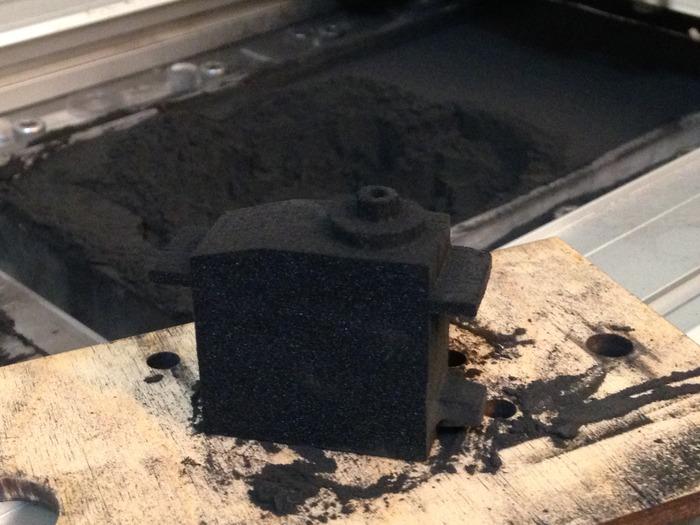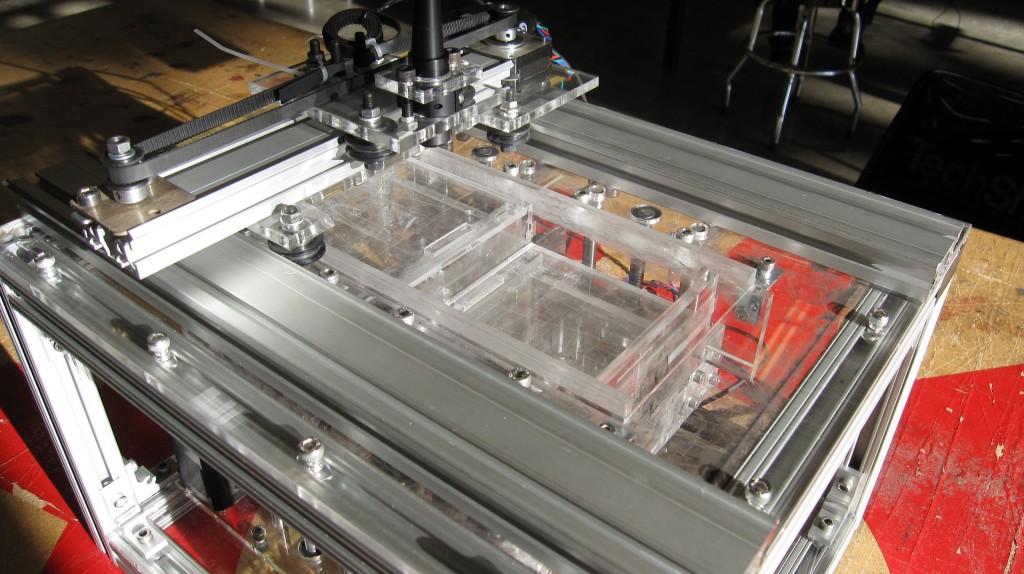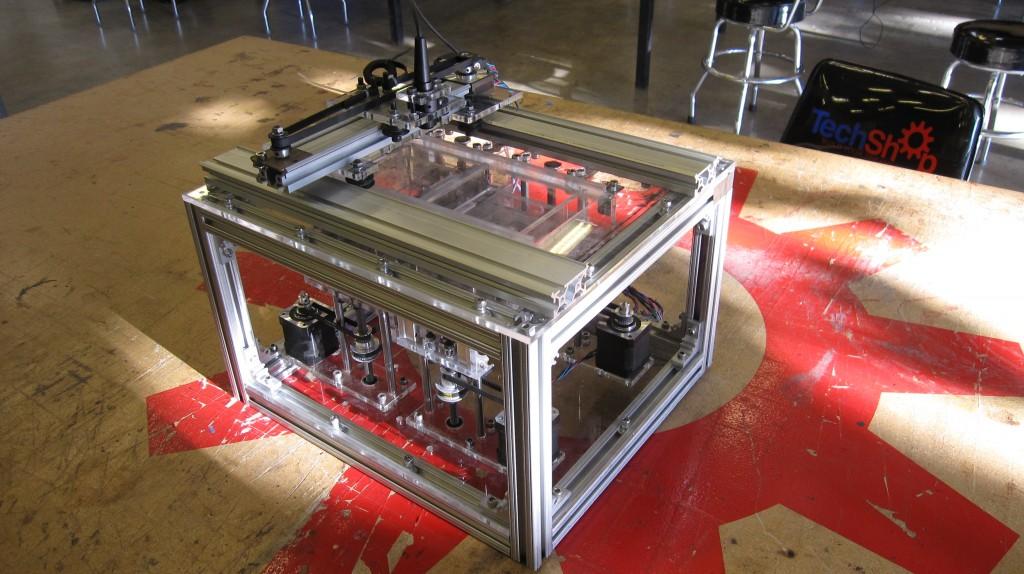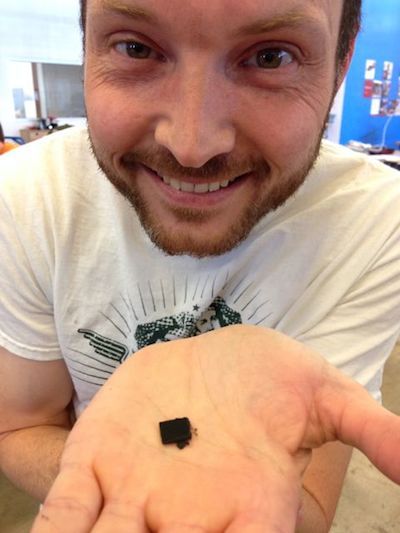UPDATE: The Indiegogo Campaign is now LIVE!
Back in October, we covered a story on a man named Brandon Fosdick, who had created a working selective laser sintering (SLS) 3D printer for his own personal use. At the time, he was undecided if he would be mass producing these printers for resale, although he did tell 3DPrint.com that the idea of selling them had “been bouncing around in (his) head”, and that he was looking into launching a crowdfunding campaign sometime in the future.
For those of you who are relatively unfamiliar with the various 3D printing technologies out there, SLS printers have typically been reserved for large scale industrial use, and only made available to ordinary designers and consumers via services such as Shapeways and Sculpteo. These printers usually cost in the $250,000+ range with some costing well over $1 million. Just in the past few months, there have been several more affordable models unveiled, although none have yet officially come to market.
Fosdick has just informed 3DPrint.com that he will be launching an Indiegogo campaign in the coming days, perhaps as soon as tomorrow, dependent on the campaign’s approval.
“I finally have a funding campaign ready to go, and it’s in review now,” he tells us. “I’m hoping the campaign will pass review and go live this week. I was hoping for tomorrow, but I have no idea how long the review takes.”
Fosdick, located in San Jose, California, says that the printer, called “Ester” will feature a 1,000cc build volume with sub-millimeter resolution. Unlike other 3D printing technologies, SLS never requires the use of any support material, because the material itself acts as support. The way in which the Ester 3D printer works is that it uses powder-based materials and a laser to sinter this powder one layer at a time, thus solidifying it before another layer of powder is spread on top. Layer by layer, the laser sinters the powder to build up an entire solid object. Fosdick says that while Ester will be configured for sintering polyester powder, it will certainly not be limited to this one material.
“There are plenty of other materials to try,” Fosdick explains. “It’s just a matter of finding the right parameters for each material. Once you have your very own Ester you’ll be able to experiment with sintering anything you can imagine. Chocolate, anyone? Currently polyester powder can be printed at high resolution, but low strength. Nylon can be printed at high strength but low resolution. This will very likely change as development continues. As more people try more materials we’ll learn what parameters work for each material. As more people buy SLS printers, we’ll be able to convince the nylon suppliers to offer finer grained powder at more reasonable prices.”
Fosdick plans on keeping the Ester completely open source. This includes everything from the hardware to the controller firmware, software and controller board. This means that everyone out there is welcome to build their own Ester, modify it and enhance it. In fact, that is exactly what Fosdick is hoping for. The potential is there to really make this technology go mainstream thanks to his incredible creation and the fact that he plans to leave it open source.
So what about the price? Will this 3D printer cost you $250,000? Absolutely not. It won’t even approach $10,000. Fosdick plans to offer five of these printers to “Alpha Testers” for a mere $2,500. The first five backers at this level will get their printers shipped to them hopefully sometime in March of 2015. He will also offer ten developer kits for only $3,000, and these will hopefully be delivered in April of 2015. These will include everything needed to assemble the Ester yourself. Once the first ten are sold, he will offer another 100 unassembled developer kits for only $3,500, or a fully assembled version for just $4,000. The unassembled developer kits will hopefully ship in May, while the fully assembled versions will be delivered in June of 2015.
The Ester currently has the ability to print with layer heights of around 150 microns, and 125 microns “reasonably well”. The goal though, is to get it to a point where it can successfully print 100 micron layers reliably.
“Ester can go well below 100 microns, but that’s currently uncharted territory, and below 50 microns the size of the powder grain becomes the limiting factor,” Fosdick explains.
As for the other specifications, Fosdick expects it to include the following:
- Build size: 150mm x 150mm x 150mm
- Layer height: 100 microns or less
- X/Y resolution: 100 microns or better
- Laser power: 4 Watts
- Laser Wavelength: 808nm
- Material: Anything that’s a fine powder
What is even more incredible is that Fosdick plans to eventually release retail versions of the Ester, which will come out at a later date and be manufactured using more “modern techniques”. He hopes that these will be even more affordable than this current version. Could we see prices in the $2,000 range? Who knows….
“I want SLS to become more accessible to everyone, more like what the FDM printers have become,” Fosdick says.
Well, if his Indiegogo campaign is a success (he is looking to raise $50,000), and he can fulfill his promises, it sounds as though SLS just might end up being accessible to just about anyone interested in the technology.
What do you think? Will you be backing Fosdick’s Ester 3D Printer? Keep updated on when the Indiegogo campaign launches and discuss in the Ester 3D Printer Forum on 3DPB.com. Check out the videos below of the Ester 3D printer in action.
Subscribe to Our Email Newsletter
Stay up-to-date on all the latest news from the 3D printing industry and receive information and offers from third party vendors.
Print Services
Upload your 3D Models and get them printed quickly and efficiently.
You May Also Like
Could 3D Printing for Biocomputing Make Wetware Aware?
As an AI arms race consumes ever more electricity, and every ChatGPT search query costs $0.36, the search for new ways of computing has intensified. One answer could be in better...
Bambu Lab Launches Software to Manage 3D Printer Fleets—No Cloud Needed
Bambu Lab has introduced a new software tool, Bambu Farm Manager, designed to help users manage large fleets of 3D printers over a local network, without relying on the cloud....
Consolidation in AM: How 2025 Is Shaping the Industry’s New Normal
The first half of 2025 has been marked by a clear shift in the additive manufacturing (AM) industry. Companies are no longer just focused on developing new tech by themselves....
3D Printing News Briefs, July 2, 2025: Copper Alloys, Defense Manufacturing, & More
We’re starting off with metals in today’s 3D Printing News Briefs, as Farsoon has unveiled a large-scale AM solution for copper alloys, and Meltio used its wire-laser metal solution to...






































